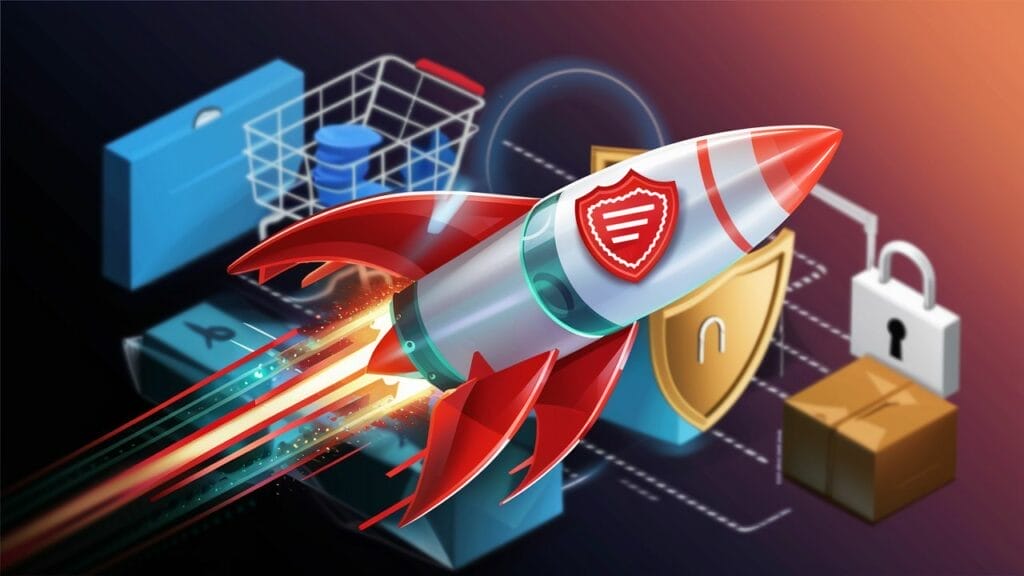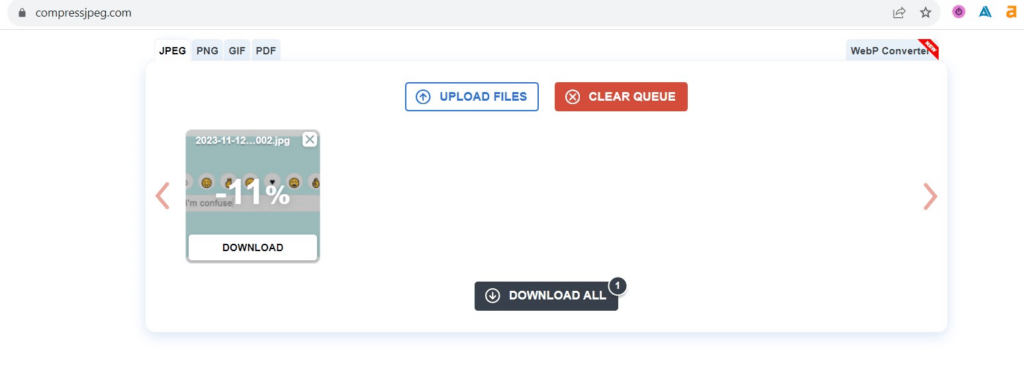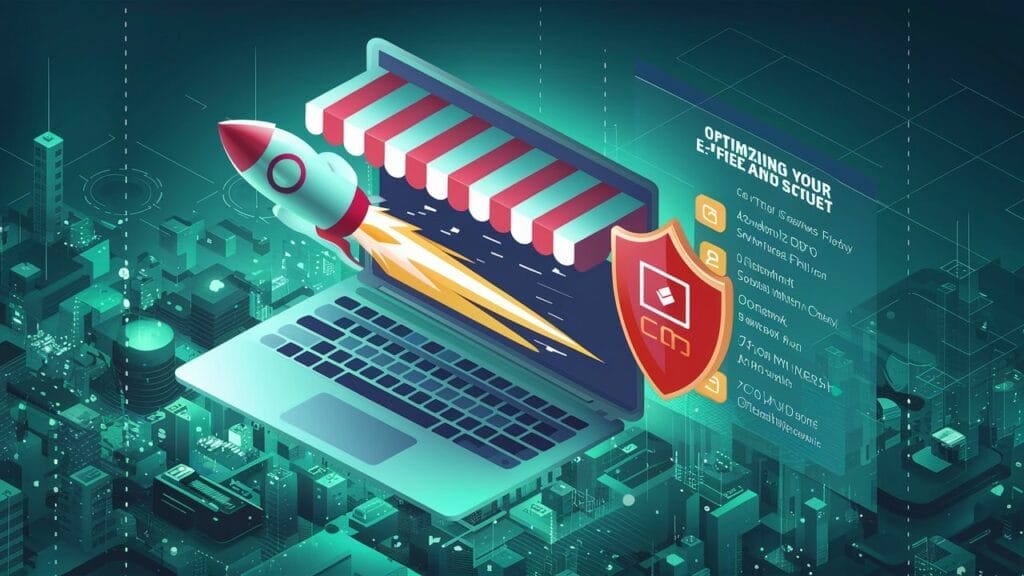Optimization, Marketing, Online Business
Optimizing Your E-commerce Store for Speed and Security
- By Moshe
- No Comments
02 Mar

Optimizing Your E-commerce Store for Speed and Security
Speed and security are foundational for your online store’s performance and trustworthiness. These aspects go beyond mere improvements; they’re vital for achieving success in e-commerce.
A slow-loading website can frustrate potential customers, leading to lost sales, while security breaches can compromise customer trust and your business’s reputation.
In this comprehensive guide, we will explore some of the most important methods to optimize your ecommerce store for both speed and security, ensuring a seamless and safe shopping experience for your customers.
Speed Optimization Tips
Choose a Reliable Hosting Provider

Your hosting provider is a key factor in determining your site’s performance. A superior hosting service not only accelerates server response times but also ensures consistent uptime. This directly affects your website’s loading speed, user experience, and ultimately, your conversion rates.
Depending on your budget and traffic, consider options like quality shared hosting, VPS, or dedicated servers. Each has its advantages and is suitable for different stages of business growth, allowing you to scale your site’s performance as your e-commerce venture expands.
Make sure to avoid web hosts that hinder your website, instead of helping it. If this is the case, don’t hesitate to change your web host.
Minimize HTTP Requests and Optimize Code
Every image, CSS, or JavaScript file on your website creates an HTTP request upon page visit, and more requests mean slower loading. To improve speed, combine multiple CSS or JavaScript files into fewer ones.
Understanding CSS and HTML is essential in this process, as they are the building blocks of web page structure and style. HTML structures the content, while CSS handles its presentation, including layout and design. CSS sprites merge multiple images, reducing image requests. Paired with well-structured HTML, this approach quickens loading times and enhances the user experience.
Another key aspect is streamlining your code. This involves removing unnecessary characters, spaces, and comments, a process known as minification. It simplifies your code without changing its functionality, leading to smaller file sizes and faster loading times.
For instance, consider a line in your original code like:

In the minified version, the following changes are made:
- Unnecessary spaces and line breaks are removed.
- The message variable is eliminated, and its value is placed directly in the alert function.
This reduces code size while maintaining its original functionality.
Optimize Images and Videos
When customers encounter slow-loading visuals, they are more likely to become frustrated and leave your site, whether they are browsing your e-commerce store or reading your blog posts. To prevent this, it’s important to optimize and compress your images and videos.
Optimizing images and videos is one of the conversion optimization strategies in e-commerce, improving site speed and user engagement. Consider compressing and resizing images without compromising their quality.

There are many online tools to help you with this task. For example, tools like Adobe Photoshop for free online services like CompressJPEG/CompressPNG can significantly reduce file sizes.
With CompressJPEG, it’s super easy to upload your JPEG images, give them a quick compress, and get them web-ready without losing out on quality.
Same for other formats like PNG and GIF.
For videos, a different approach is required. Rather than hosting them directly on your server, which can consume substantial bandwidth, it’s more efficient to use platforms like YouTube or Vimeo and simply embed (not upload) them on your website
Uploading your videos to these platforms and then embedding them on your site, can help you maintain video quality without impacting your site’s loading speed.
Caching Techniques
Caching stores copies of your site’s files in a temporary storage location, allowing for quicker access and reduced server load. This results in faster page load times for your visitors, especially for returning customers who have already accessed your site.
There are several caching methods you can implement:
- Browser Caching: This involves storing parts of your website, such as stylesheets, images, and JavaScript files, in the user’s browser. The next time the user visits your site, these elements load from their local storage instead of the server, significantly reducing load times.
- Server-Side Caching: This technique stores website data on the server, making it quicker to retrieve and serve to the user. This is particularly effective for dynamic content that changes frequently.
- Content Delivery Network (CDN): A CDN caches your website’s content on multiple servers around the world. When a user accesses your site, they are served content from the nearest server, which decreases the time it takes for the data to travel, thus speeding up the loading process.
- Object Caching: This method caches data that is computationally expensive to generate, like database queries. By storing the results of these queries, your site can quickly retrieve and display content without having to repeat the same processes.
Implementing these caching strategies effectively reduces the strain on your server and speeds up the experience for your users, leading to improved satisfaction and potentially increased conversion rates.
Security Optimization Tips
Regularly Update and Maintain Your Site
Maintaining the health of your e-commerce platform is a continuous journey. Keeping your e-commerce platform, plugins, and scripts up-to-date is crucial for both speed and security. Developers regularly release updates that not only introduce new features but also fix bugs and security vulnerabilities, bolstering your website’s resilience.
Neglecting updates can leave your site open to different types of malware and hacking attacks. This can have serious consequences, such as data breaches, financial losses, and a loss of trust among your customers.
Regular maintenance also involves optimizing your database, checking for broken links, and ensuring that all elements of your site are functioning as intended.
Use Secure Payment Gateways
Transaction security is paramount in e-commerce. Choose payment gateways that are not only user-friendly but also known for their robust security measures.
For instance, Stripe employs advanced fraud prevention tools and machine learning algorithms that analyze each transaction in real-time to detect and prevent potential threats.

To complement these security features, you can employ webhooks for real-time monitoring of payment transactions. Webhooks can alert you to transaction events as they occur, enabling an immediate response to any unusual activity, thereby further enhancing the security of financial transactions.
If your chosen payment gateway lacks adequate security, it can leave your customers vulnerable to data breaches and identity theft. This not only puts their financial security at risk but also diminishes their confidence in your e-commerce site.
Additionally, ensure that your site is PCI DSS compliant, meaning it adheres to the Payment Card Industry Data Security Standard. When you adhere to PCI DSS, you guarantee that sensitive payment information, like credit card data, stays protected when people use your online store.
Alternatively, consider integrating trusted and widely-used payment systems such as PayPal and Amazon Pay on your e-commerce site. These services offer high-level built-in security and have gained customer trust through their reliability and user-friendliness.
By using these payment methods, you can streamline the purchasing process, as many customers already have accounts with these services. This familiarity reduces the need for new account registrations or adding payment details, facilitating quicker and more straightforward transactions.
A notable example is Toner Buzz, a printer supplier e-commerce store, which is successfully using both PayPal and Amazon Pay to improve the purchasing experience of their customers.
Here is a screenshot from their W2020A product page with Amazon Pay and PayPal provided as default payment methods before credit cards:

This example illustrates that some e-commerce retailers actually prioritize payment systems like Amazon Pay and PayPal over other payment methods.
SSL Certificates

Today, websites without SSL certificates are extremely rare. If your website is among the few that don’t have one, it’s important to install an SSL certificate as soon as possible.
SSL (Secure Sockets Layer) certificates encrypt data transmitted between a user’s browser and an e-commerce website, crucial for protecting personal and payment information. This level of security is not just about protecting data; it also enhances the trust customers place in your website.
Moreover, having an SSL certificate can positively affect your site’s search engine ranking, as search engines tend to favor secure sites.
Implement Strong Authentication Measures
Two-factor authentication (2FA) improves security through two distinct proofs for access: a password (something you know) and a unique code from a phone or app (something you have). This significantly reduces the risk of unauthorized access to sensitive areas of your e-commerce store.
Consider this scenario: Imagine someone gains access to your password, perhaps through a phishing attack or data breach. Without 2FA, they could easily access your account and potentially compromise your e-commerce platform.
However, with 2FA in place, even if they have your password, they would still need that second authentication factor – something they don’t possess – to gain entry.
Using AI for Better Security
AI significantly improves online privacy in e-commerce platforms. AI systems are capable of analyzing large amounts of data to detect unusual patterns that might indicate a security threat.
For instance, they can identify unexpected login attempts or strange buying behaviors, which could suggest a risk of fraud or a security breach. AI can also support stronger encryption and authentication methods.
Adding AI to your security measures can help in identifying and preventing potential security issues, contributing to the overall safety of the online store and its customers.
Educate Your Team for Optimal Speed and Security
A knowledgeable and skilled team is essential for maintaining the speed and security of your e-commerce website. Key areas to focus on include:
- Regular Device Maintenance: Keeping your team’s devices in top condition is vital for uninterrupted e-commerce operations. Conducting frequent system updates, disk cleanups, managing files and data, and fine-tuning startup programs can greatly improve the performance and extend the lifespan of your devices.
- Understanding Best Practices: Educate your team on best practices in web development and e-commerce management. This includes efficient coding practices, image optimization, and understanding the use of caching and CDN services.
- Security Awareness Training: Regular training sessions on cybersecurity can help your team stay updated on the latest security threats and prevention methods. This includes understanding the importance of regular software updates, secure coding practices, and awareness of phishing and other forms of cyberattacks.
- Regular Audits and Feedback: Implement a system for regular audits of your website’s speed and security. Feedback from these audits can be used to educate the team on areas of improvement and successful strategies that have been implemented.
Incorporating these practices ensures that your team is not only technically competent but also actively engaged in maintaining the high performance and security standards of your e-commerce website.
For small teams, each member’s role is crucial. If you have a small team, encourage cross-training in different skills to ensure critical areas are covered. Conduct short, regular meetings to share knowledge and adapt swiftly to new challenges.
Final Words
Optimizing your e-commerce store for speed and security is a continuous process. It involves not only implementing technical solutions but also fostering an informed and vigilant team.
There are several additional ways to improve the speed and security of your e-commerce website. In our guide, we’ve emphasized the most critical strategies.
For more in-depth insights about marketing and business tips, browse our blog.
Helping thousands of people to automate their dropshipping business. Skilled in Marketing Management, Advertising, and eCommerce.
Recent Posts
 Successful Dropshipping Techniques To Succeed In Dropshippin…April 15, 2024
Successful Dropshipping Techniques To Succeed In Dropshippin…April 15, 2024 5 Best Practices For Effective Inventory ManagementApril 8, 2024
5 Best Practices For Effective Inventory ManagementApril 8, 2024 How Many Products Should I Start With Dropshipping?April 7, 2024
How Many Products Should I Start With Dropshipping?April 7, 2024 Know the Best Product Research Tools for DropshippingApril 4, 2024
Know the Best Product Research Tools for DropshippingApril 4, 2024 Wix Dropshipping: The Ultimate Guide to Starting a Thriving …April 3, 2024
Wix Dropshipping: The Ultimate Guide to Starting a Thriving …April 3, 2024





Moshe